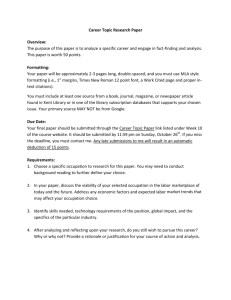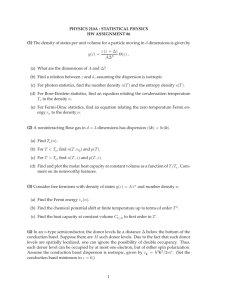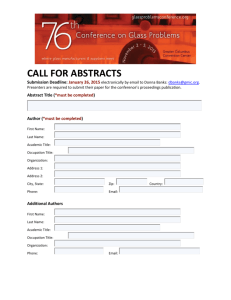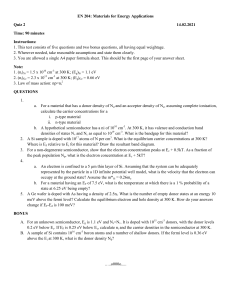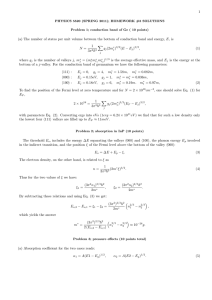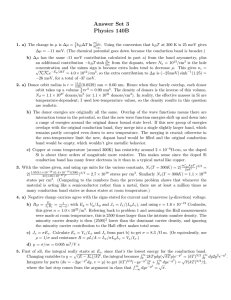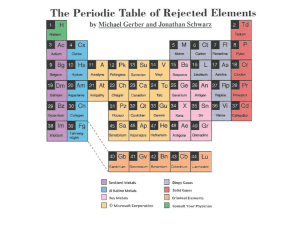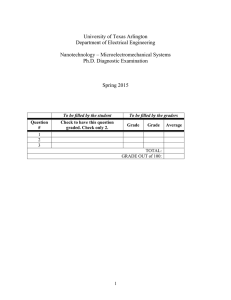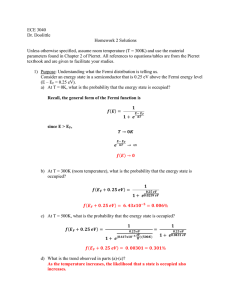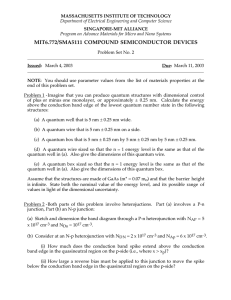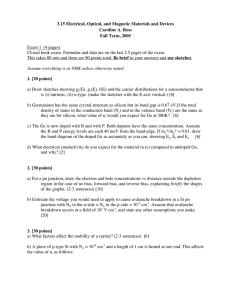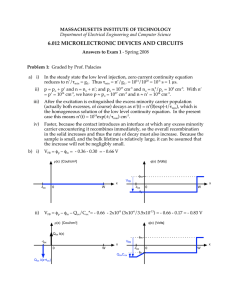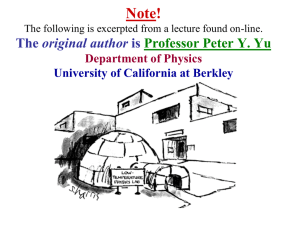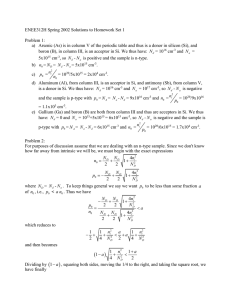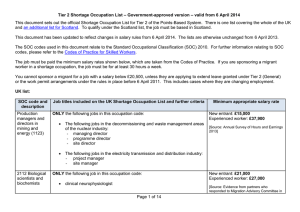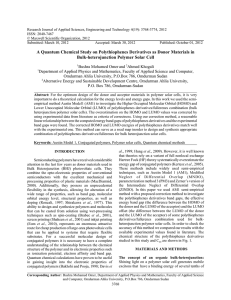Physics 617 Problem Set 7 Due Monday, Apr 11
advertisement
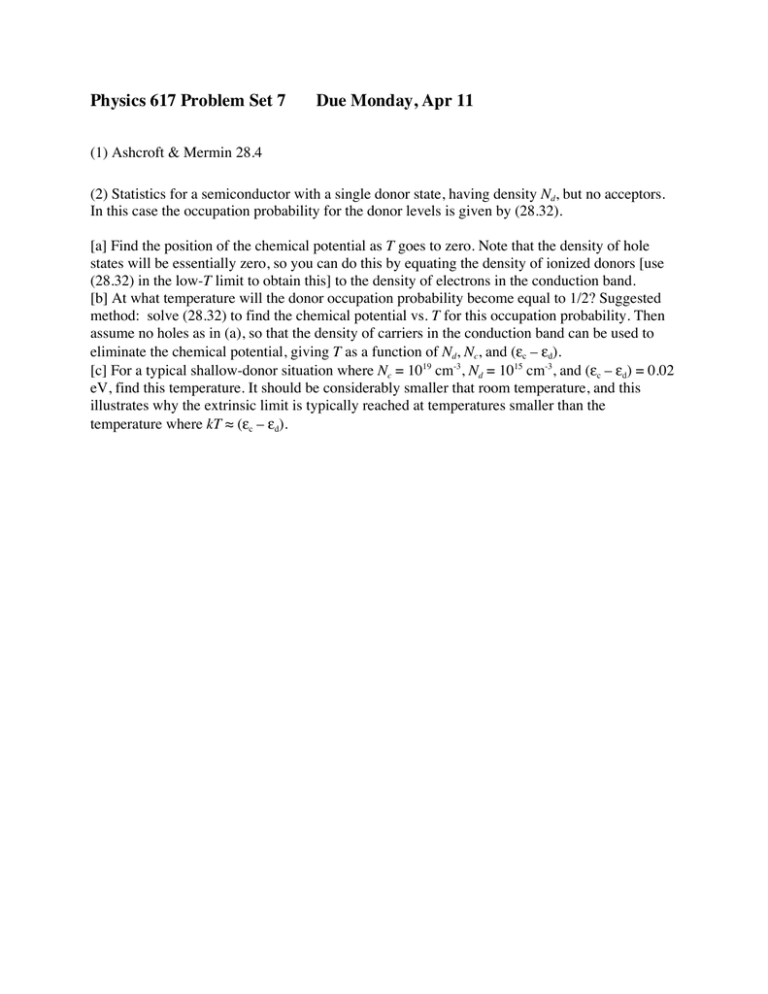
Physics 617 Problem Set 7 Due Monday, Apr 11 (1) Ashcroft & Mermin 28.4 (2) Statistics for a semiconductor with a single donor state, having density Nd, but no acceptors. In this case the occupation probability for the donor levels is given by (28.32). [a] Find the position of the chemical potential as T goes to zero. Note that the density of hole states will be essentially zero, so you can do this by equating the density of ionized donors [use (28.32) in the low-T limit to obtain this] to the density of electrons in the conduction band. [b] At what temperature will the donor occupation probability become equal to 1/2? Suggested method: solve (28.32) to find the chemical potential vs. T for this occupation probability. Then assume no holes as in (a), so that the density of carriers in the conduction band can be used to eliminate the chemical potential, giving T as a function of Nd, Nc, and (εc – εd). [c] For a typical shallow-donor situation where Nc = 1019 cm-3, Nd = 1015 cm-3, and (εc – εd) = 0.02 eV, find this temperature. It should be considerably smaller that room temperature, and this illustrates why the extrinsic limit is typically reached at temperatures smaller than the temperature where kT ≈ (εc – εd).

